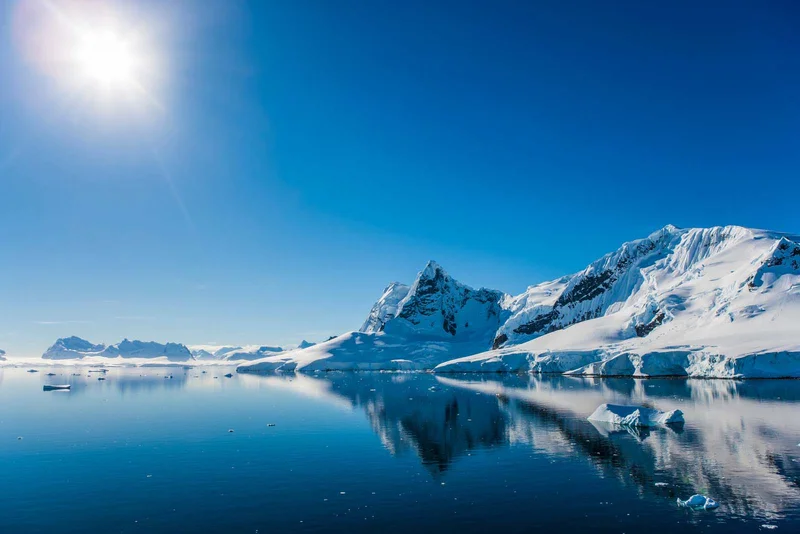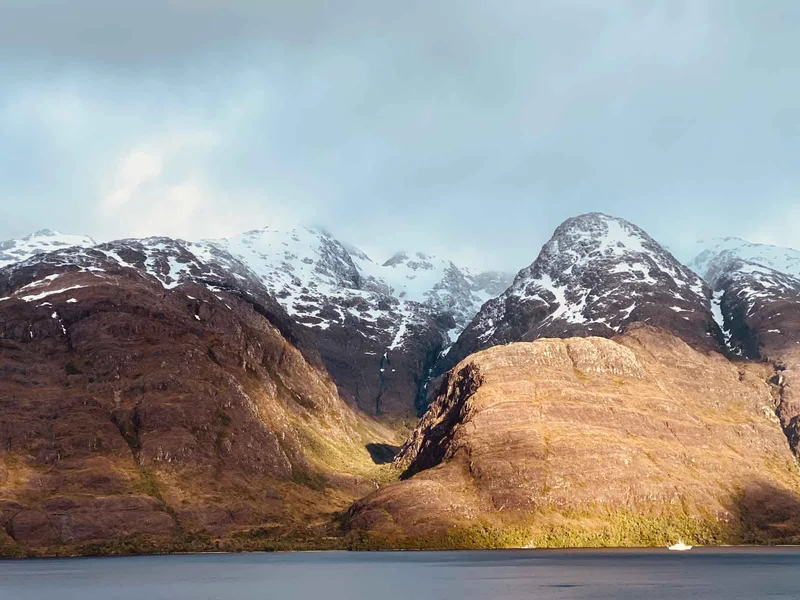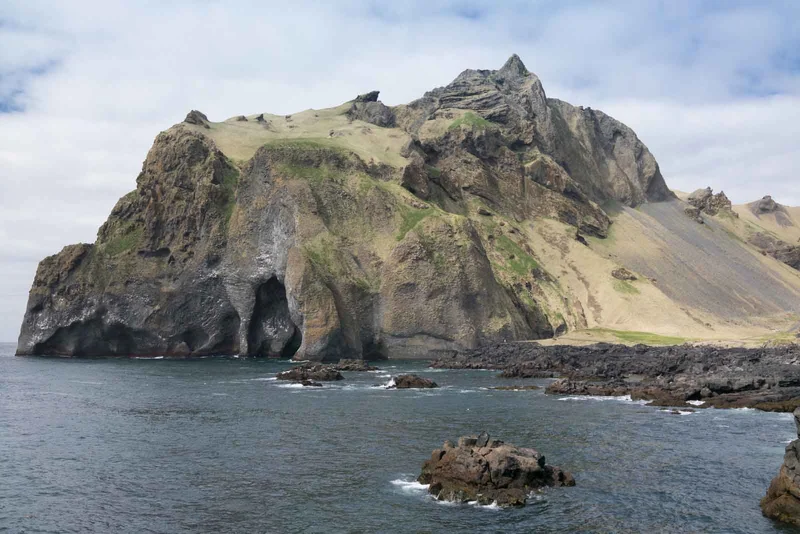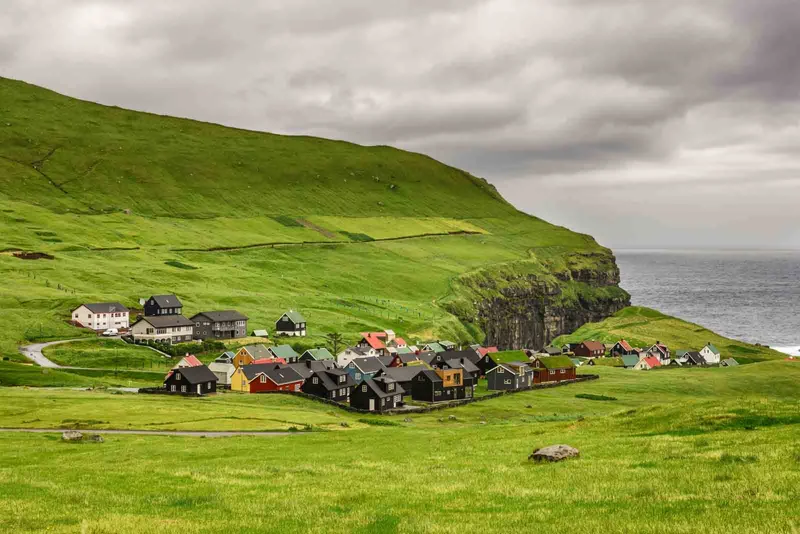
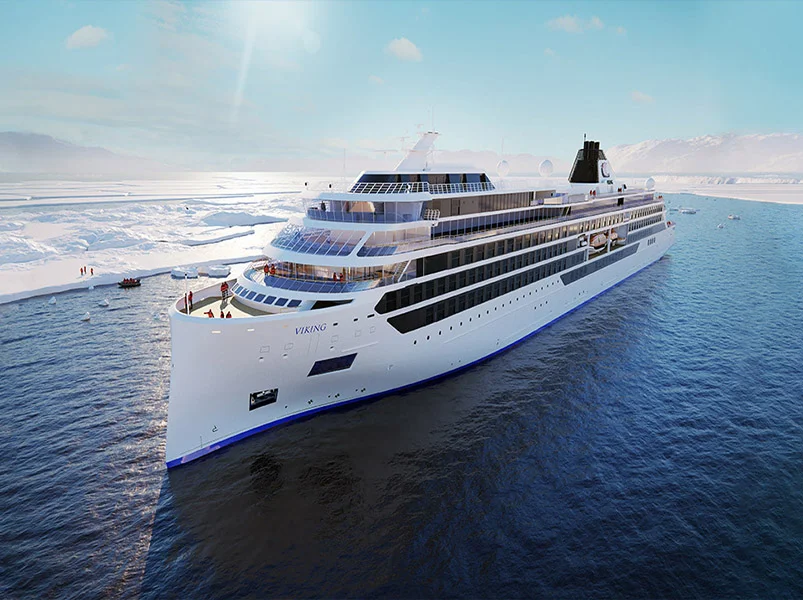
Breathtaking Landscapes of Land and Sea
Experience the awe-inspiring beauty of floating icebergs and rugged terrains as you embark on an expedition to the Canadian High Arctic and Greenland. Marvel at towering icebergs, vast icefields, and deep-blue fjords teeming with marine life. Discover the Arctic Circle’s unique way of life, immerse yourself in the traditions of the Inuit communities that have thrived for generations, and bask in the endless daylight of the midnight sun. Join us on an unforgettable voyage to these remote, untouched lands.
27 Day Artic Itinerary
Day 1: Nuuk, Greenland
Step aboard your ship and settle into your cabin. Nuuk, Greenland’s capital, is one of the world’s smallest capital cities, with a population of just 16,000. Nestled on the southwest coast, it is home to Nuup Kangerlua Fjord—one of the world’s largest fjords—where whale sightings are common. Nuuk’s dramatic landscapes make it a paradise for nature lovers, offering hiking along the rugged coastline or fjord explorations by boat or kayak. The city’s colorful houses contrast beautifully with the striking backdrop of Sermitsiaq Mountain.
Day 2: Nuuk, Greenland
The first Inuit settlers arrived in Nuuk from the Canadian Arctic around 4,500 years ago, and their cultural heritage remains strong today. Traditional Inuit designs are woven into local knitwear, and artwork reflects a fusion of modern Danish and indigenous traditions. Colonial Harbor is the city’s architectural focal point, featuring vibrant buildings, while Nuuk’s pride is the Katuaq Cultural Center, designed to echo the movement of the northern lights and surrounding mountain ranges.
Day 3: Itilleq Fjord, Greenland
Greenland’s west coast serves as a scenic Arctic corridor and a vital transport route for its inhabitants. The ever-shifting icebergs and landscapes have long been a source of fascination, much like the explorers who ventured here centuries ago. Renowned scientist Alfred Wegener, the pioneer of the continental drift theory, undertook several expeditions to Greenland, which later inspired John Buchan’s 1933 novel, A Prince of the Captivity.
Day 4: Ilulissat, Greenland
Rich in Arctic heritage, Ilulissat is perched on the shores of its iconic ice fjord, where colorful houses overlook a procession of icebergs drifting past. This natural spectacle, studied extensively by glaciologists, has earned the fjord UNESCO World Heritage status. The fjord is fed by Sermeq Kujalleq—one of the world’s fastest-moving glaciers—producing immense icebergs that float out to sea. True to its name, Ilulissat means “icebergs” in Kalaallisut, the Greenlandic language.
Day 5: Uummannaq, Greenland
Founded in 1758, Uummannaq is dominated by its striking heart-shaped mountain, which glows red in the summer’s midnight sun. The town’s historic waterfront is lined with centuries-old buildings, and its museum showcases Greenland’s history. Archaeologists have discovered the oldest human remains in Greenland here, preserved for over 500 years. Uummannaq is also linked to Alfred Wegener, who departed from its shores for his final expedition in 1930, tragically perishing on Greenland’s ice cap after a successful supply mission.
Day 6: Sailing Baffin Bay
Baffin Bay, named after Lieutenant William Baffin, has been a crucial part of the Arctic ecosystem since his 1616 expedition. This icy expanse remains frozen for much of the year, with drifting ice fragments in the summer. While sailing through these waters, guests can attend expert lectures or watch immersive films on the state-of-the-art 8K laser-projected panoramic screen in The Aula, a cutting-edge educational venue at sea. Its retractable, floor-to-ceiling windows offer breathtaking 270° views of the Arctic wilderness.
Day 7: Pond Inlet, Nunavut, Canada
Located on the northern tip of Baffin Island, Pond Inlet marks the eastern entrance to the famed Northwest Passage. Home to a small yet thriving Inuit community, it is affectionately known as the “Jewel of the North,” offering stunning vistas of glaciers, icebergs, and towering mountains. It also serves as the gateway to Sirmilik National Park, a protected sanctuary for Arctic wildlife, including polar bears, wolves, narwhals, and beluga whales.
Day 8-10: Exploring the Canadian High Arctic, Canada
The Canadian High Arctic is a land of striking contrasts—icy landscapes, extreme cold, and months of continuous darkness. This region has long lured explorers seeking the Northwest Passage. Beechey Island holds the graves of members of the ill-fated Franklin Expedition, while Dundas Harbour was once a Royal Canadian Mounted Police outpost. Cape Hay’s dramatic cliffs provide panoramic views and a haven for Arctic wildlife.
Day 11: Sailing Baffin Bay
Explore the diverse marine ecosystem of Baffin Bay, a vital feeding ground for Arctic wildlife. Home to Arctic cod, Greenland halibut, seals, murres, and bowhead whales, this frigid waterway plays a crucial role in the Arctic food chain. Guests can deepen their understanding through expert lectures or enjoy the stunning Arctic scenery from The Aula’s expansive glass-enclosed observatory.
Day 12: Sisimiut, Greenland
As Greenland’s second-largest city, Sisimiut is an adventure hub surrounded by towering mountains and glacial valleys. Scenic hiking trails lead to breathtaking vistas, while the Sisimiut Museum houses a collection of 18th- and 19th-century buildings. Visitors can see traditional kayaks along the shores, still used by the Inuit. The word kayak itself originates from the Greenlandic qajaq.
Day 13-26: Arctic and Canadian Destinations
From Nuuk’s thriving culinary scene to the remote beauty of Kapisillit, each stop offers a unique blend of history, culture, and nature. Highlights include:
- Paamiut, Greenland – A small, friendly town home to Greenland’s largest population of white-tailed eagles.
- Ivittuut, Greenland – A former Norse settlement and once a major supplier of cryolite for aluminum production.
- Battle Harbour, Canada – A 19th-century fishing outpost turned living museum.
- Red Bay, Canada – A historic Basque whaling station and UNESCO World Heritage Site.
- Gros Morne National Park, Canada – A geological wonderland with soaring fjords and ancient rock formations.
- Havre-Saint-Pierre, Canada – Home to striking monolithic rock formations shaped by time.
- Tadoussac, Canada – A historic village known for its whale-watching opportunities.
- Quebec City, Canada – A European-style city with cobblestone streets and the iconic Château Frontenac.
- Trois-Rivières, Canada – A charming cultural center steeped in French colonial history.
- St. Lawrence Seaway Locks – A feat of engineering connecting the Atlantic Ocean to the Great Lakes.
- Toronto, Canada – A cosmopolitan metropolis with a vibrant arts scene and historic districts.
Day 27: Toronto, Canada
Conclude your adventure in Toronto, Canada’s dynamic city along Lake Ontario. Bid farewell to your fellow travelers or extend your stay to explore more of this remarkable destination.
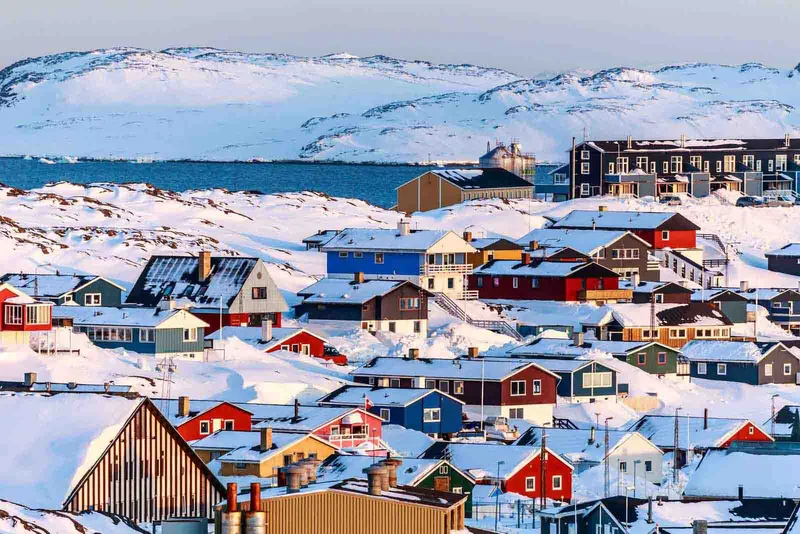
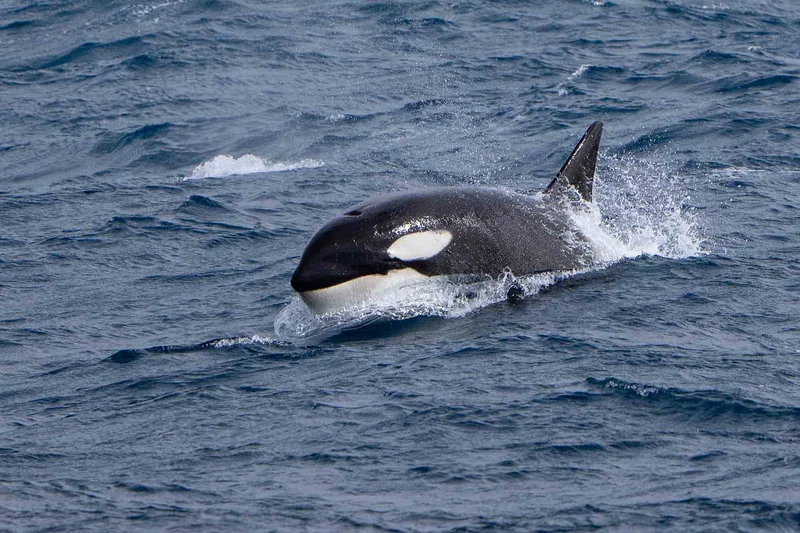
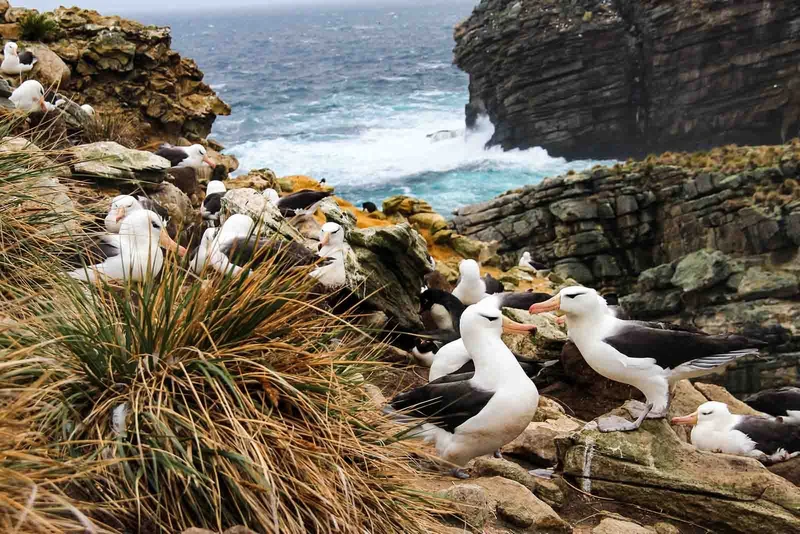
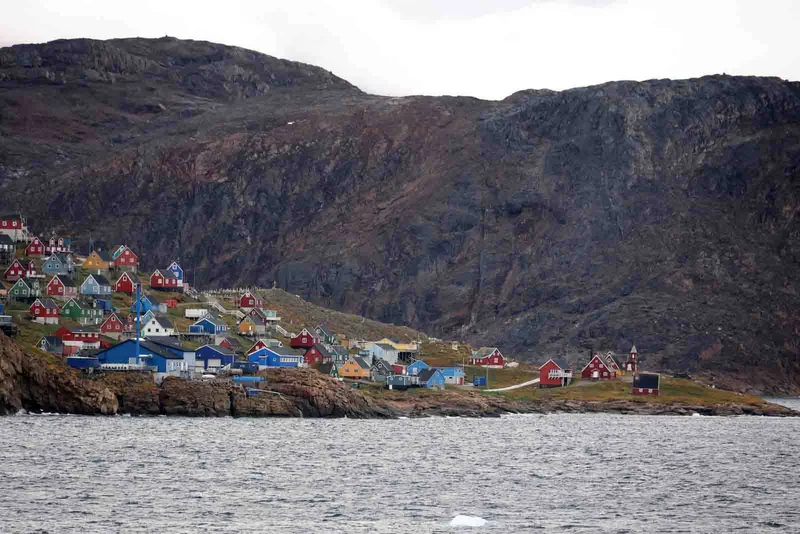
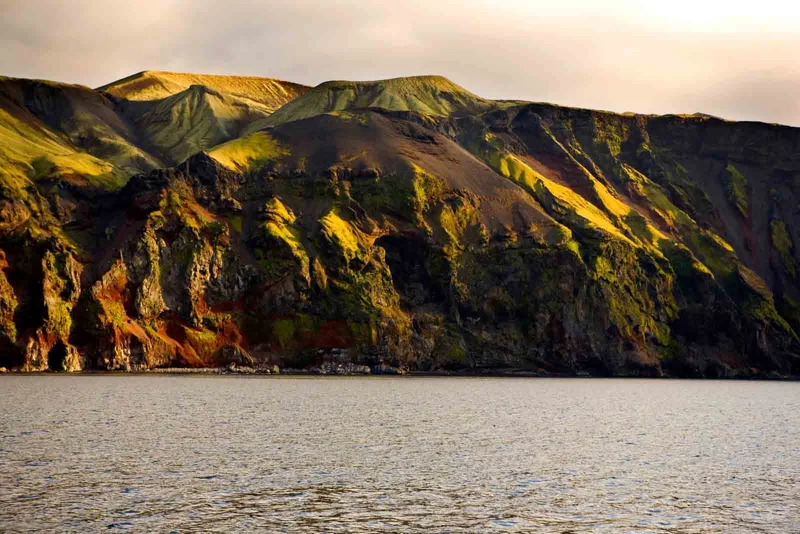
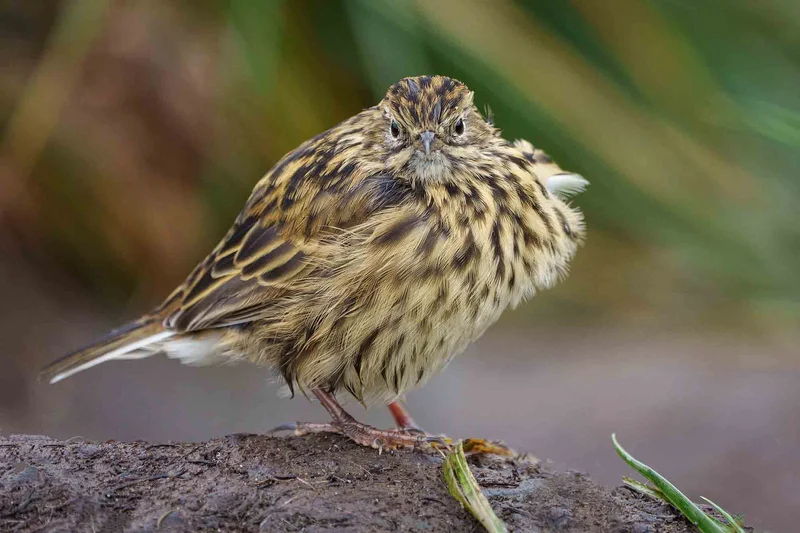
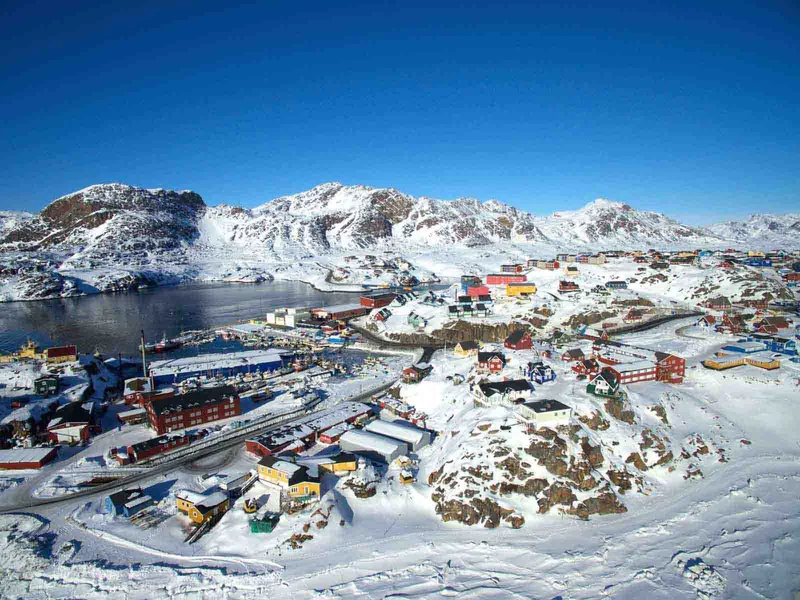
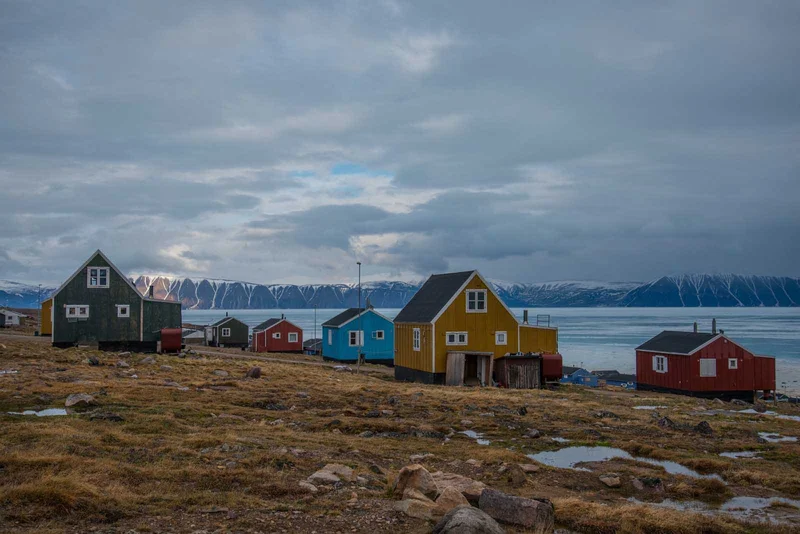
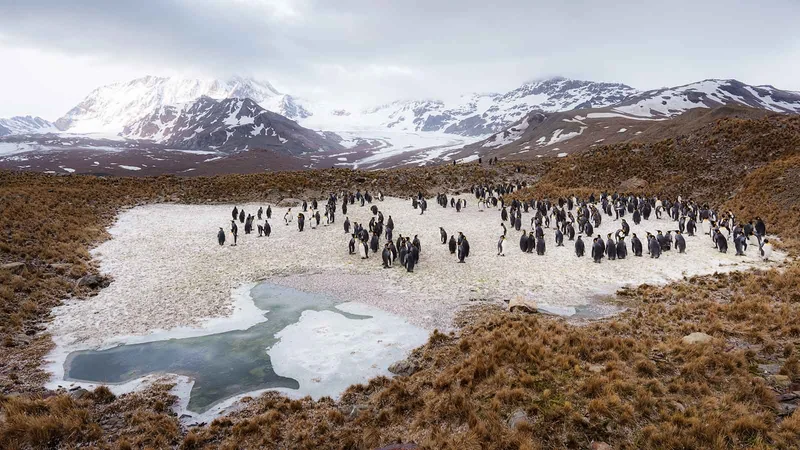
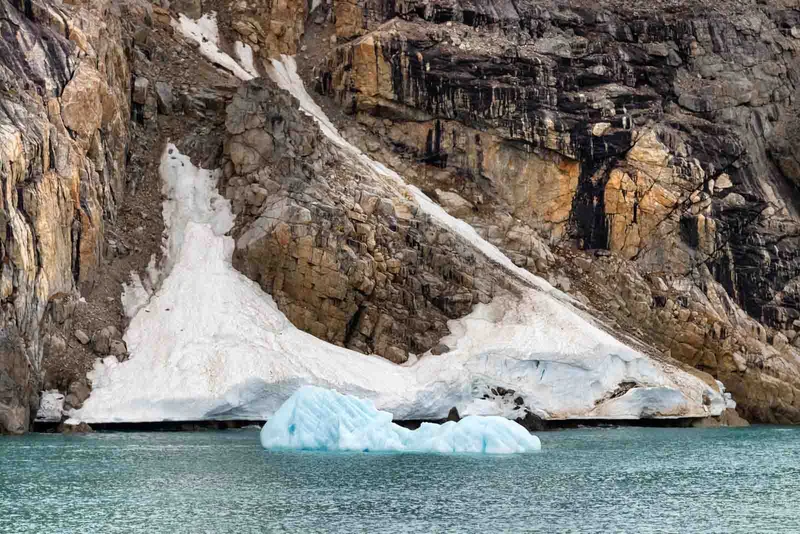
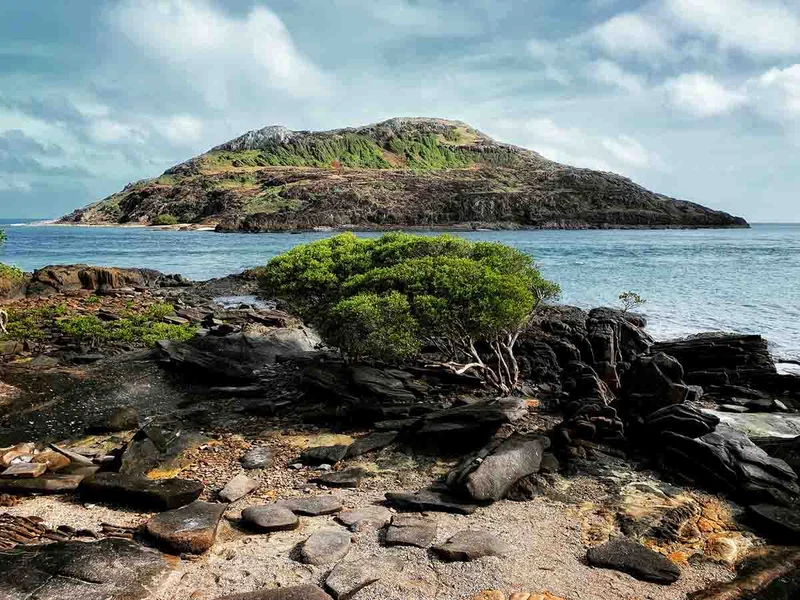
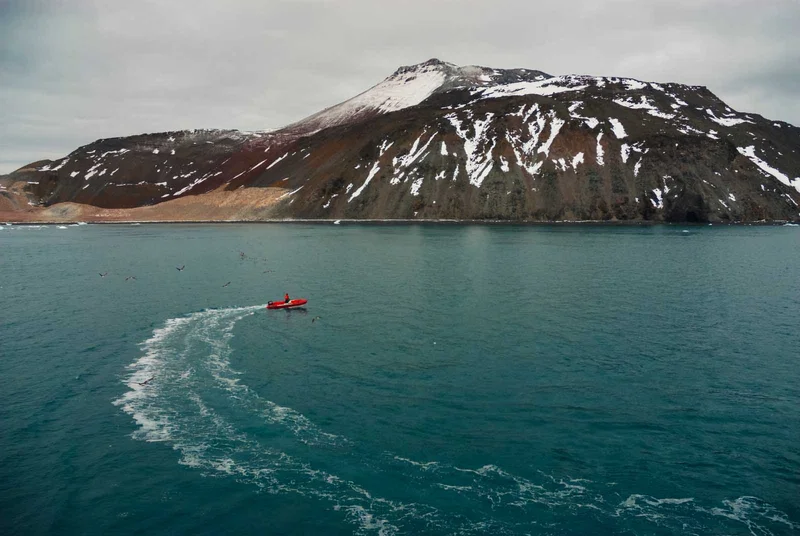
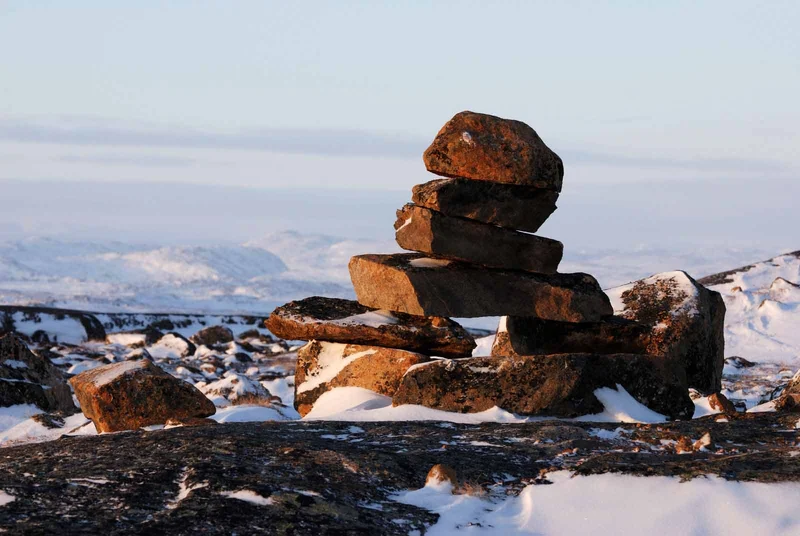
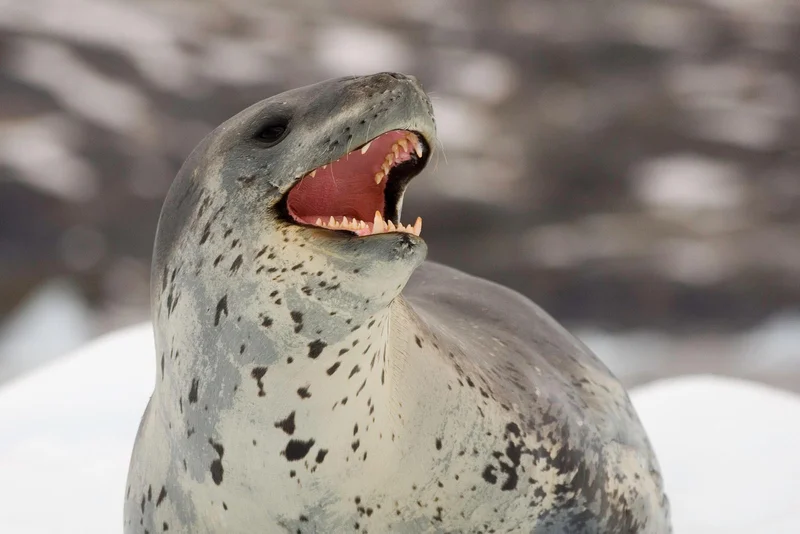
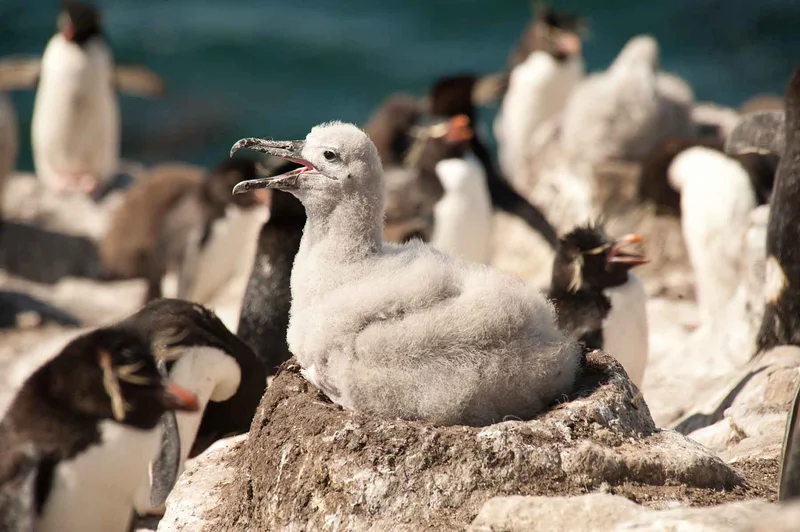
27 Day Artic Itinerary Highlights
- Explore the Arctic’s majestic icebergs and vast icefields.
- Discover deep-blue fjords teeming with marine life.
- Experience the rich traditions of Inuit communities.
- Witness the midnight sun’s endless daylight.
Itinerary Map
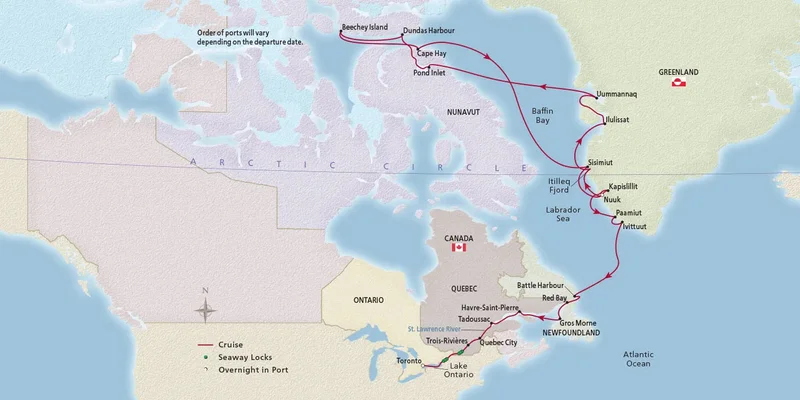
27 Day Arctic cruise activities
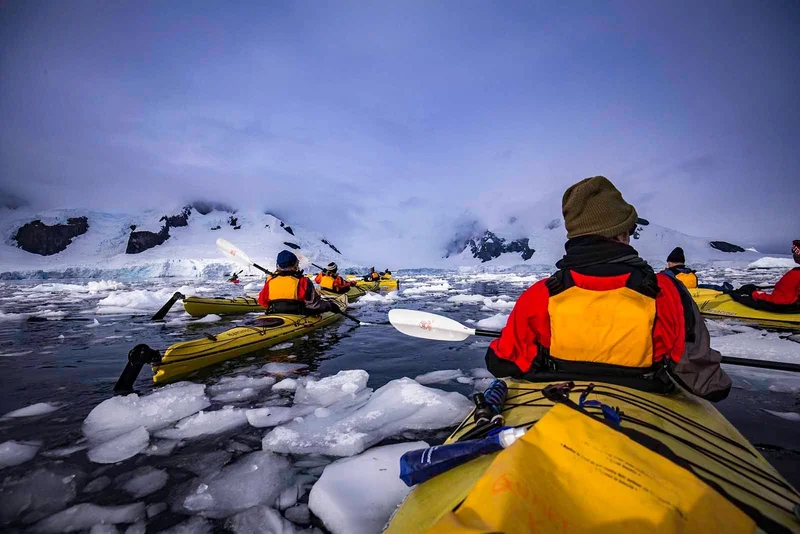
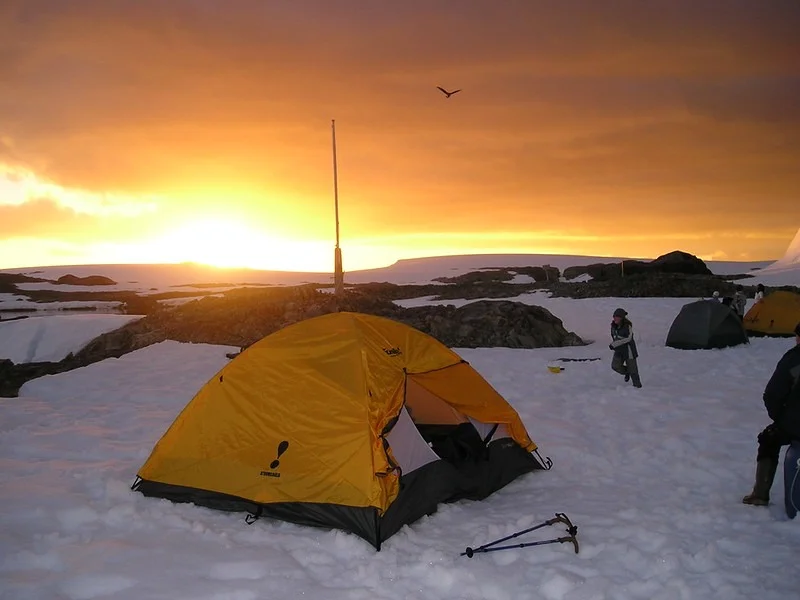
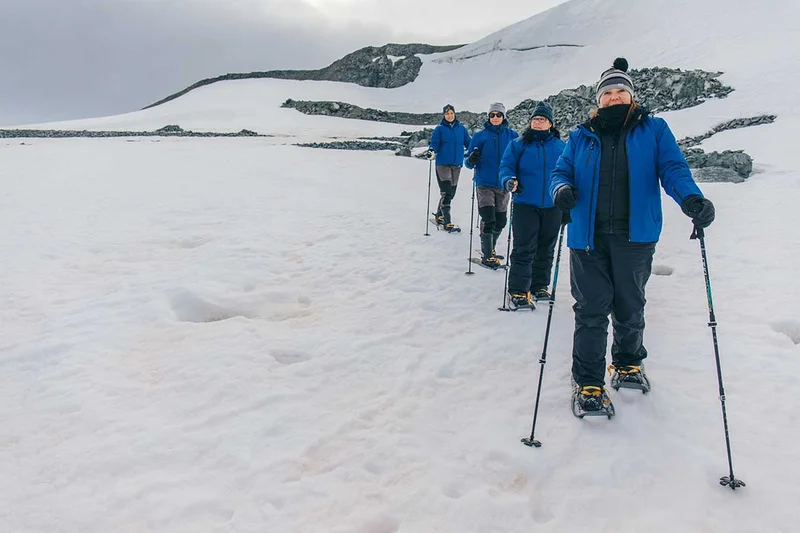
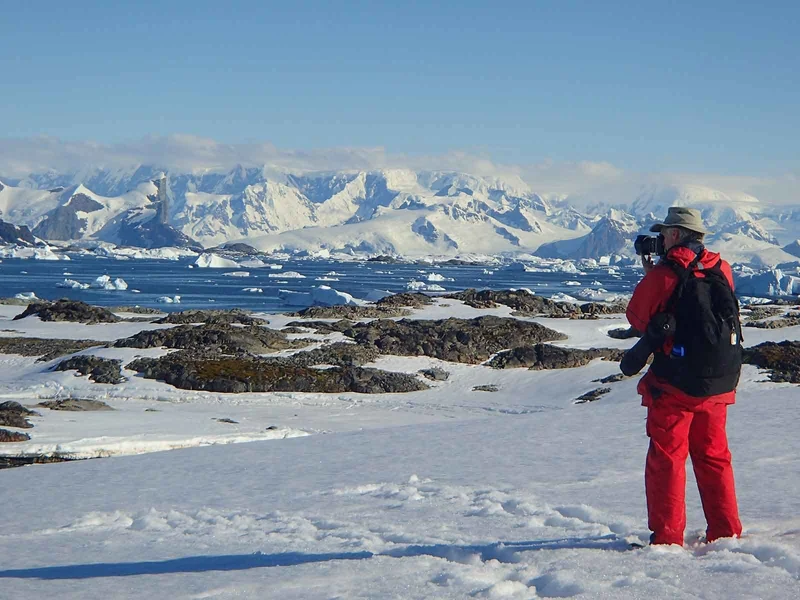
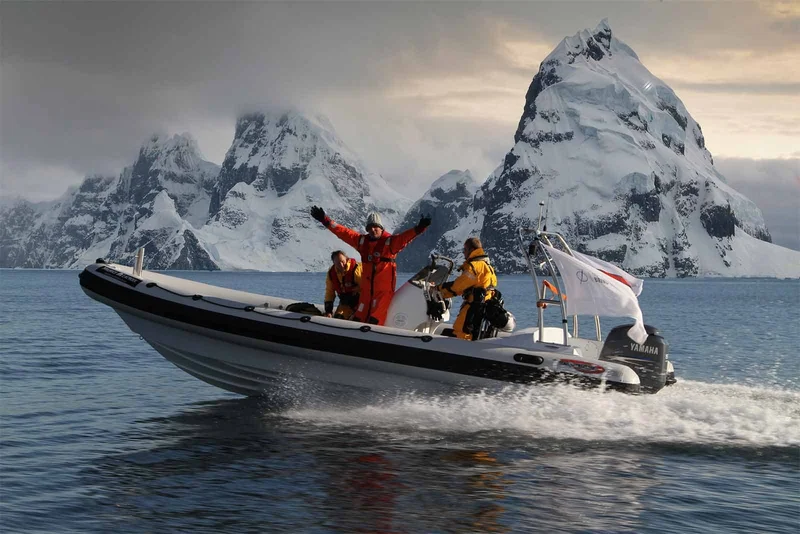

Animals you might see on this itinerary
Why travel with us?
Would you like to know why booking with us is the best choice?
Discover the BenefitsSimilar Itineraries
